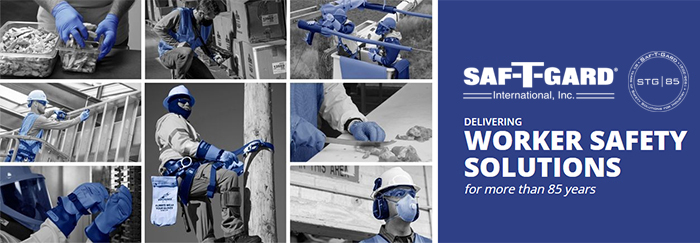| |

|
How to Properly Care for Rubber Insulating Gloves to Extend Use, Safety and Savings |
| |
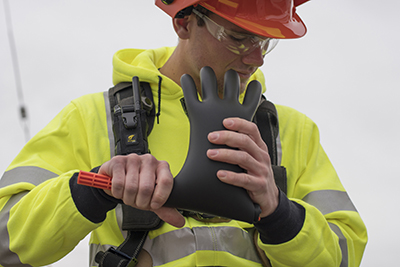
|
| |
OSHA and
ASTM standards require regular inspection of
in-service electrical
protective equipment in order to maintain compliance and ensure the products’
safety and integrity when exposed to a wide range of voltages. All rubber
insulating gloves should be thoroughly inspected prior to use. Common problems
to look for include the following:
- Cracking
and Cutting – Prolonged folding or compressing can cause this type of
rubber damage.
- UV
Checking – Storing in areas exposed to prolonged sunlight causes UV
checking.
- Chemical
Attack – Oils and petroleum compounds can cause swelling of the
rubber.
- Avoid
Folding – The strain on rubber at a folded point is equal to stretching
the rubber to twice its length.
- Snags – Wood,
metal splinters and other sharp objects can snag or tear rubber.
- Physical
Damage – Rope burns, deep cuts and puncture hazards are cause for
rejection.
Visually
inspecting rubber gloves identifies physical, chemical or ozone damage. Direct
light is recommended because it enhances the ability to see surface
imperfections on the rubber. Inflating the gloves with air or otherwise
stretching the surface helps identify age and ozone damage as well as other
physical damage such as snags, rope burns, deep cuts and punctures.
Damage
to many types of personal protective equipment (PPE) can be apparent when the
equipment or devices are inspected by the user. However, rubber insulating gloves
are more complicated. It is important to note that the reduction in
effectiveness can be caused by a variety of factors that may not be readily
apparent to the user, and improper use of rubber insulating gloves can be a
matter of life and death. The best way to ensure that rubber gloves are safe
for their intended use is to have them periodically retested at their proof
test voltage by a qualified test lab. Testing is also a critical and required
component to maintaining arc and electrical safety. Not only does it maintain
compliance, but it also helps increase savings. Rubber insulating gloves are
costly, and many times these costs are unnecessarily increased by purchasing
replacements for products that could have remained in service with the proper
testing and recertification.
Saf-T-Gard
is uniquely qualified to work with your facility and keep your employees safe
while meeting all applicable industry standards with our Voltgard® Test
Lab, the largest and independent NAIL4PET-accredited test lab for
rubber insulating products in the United States. The Voltgard® Test
Lab provides full-service testing and recertification of rubber
gloves, and for utilities and high-voltage contractors, the Voltgard® Test
Lab also tests rubber insulating sleeves, blankets, line hose,
covers, dielectric footwear, jumper cables, grounding sets, plastic guards, hot
sticks, matting, hoods and insulating hand tools.
The
Voltgard® facility is equipped with state-of-the-art equipment for the complete
testing of these products, including washing, visual inspecting, and electrical
testing – all to applicable ASTM standards. Additionally, Saf-T-Gard has one of
the largest new rubber goods inventories in the world and can immediately
replace any goods not meeting applicable standards. No one else offers the
Voltgard® level of service. Click here to learn more.
|
| |
|
| |
ANSI 2021 is Here. Are You Prepared? |
| |

|
| |
To be
ANSI/ISEA Z308-2021 compliant in the workplace, your customers need to have
their first aid kits and cabinets updated by October 15, 2022.
OSHA
(U.S. Department of Labor Occupational Safety & Health Administration) is
the main federal agency charged with the enforcement of workplace safety and
health legislation. OSHA regulations regarding first aid kits are contained in
the Code of Federal Regulations under section 29 CFR 1910.151 and in Appendix
A. OSHA does not provide specifications for first aid kit contents per se but
defines mandatory requirements for availability of kits on worksites. In
Appendix A of the OSHA guidelines, ANSI is referenced as the originator of
first aid kit specifications and minimum contents requirements.
ANSI (the
American National Standards Institute) and ISEA (International Safety
Equipment Association) American National Standard – Minimum Requirements for
Workplace First Aid Kits and Supplies (ANSI/ISEA Z308.1-2021) establishes
minimum performance requirements for first aid kits and their supplies. First
aid kits are classified based on the assortment and quantity of first aid
supplies intended to deal with most types of injuries and sudden illnesses that
may be encountered in the workplace. These may include major and minor wounds,
minor burns, sprains and strains, and eye injuries. As each work environment is
unique, it is expected that the contents of each kit will be supplemented as
needed based upon the recommendations of a person competent in first aid. Click
here to
see the components first aid kits must contain to be compliant with the ANSI
2021 standard.
The 2021
ANSI revision introduces two classes of first aid kits:
- Class A kits
with contents designed to deal with most common types of workplace injuries.
- Class B kits
with a broader range and quantity of supplies to deal with injuries in more
complex or high-risk environments.
The kit
containers are classified by portability, ability to be mounted, resistance to
water, and corrosion and impact resistance. Four types are identified:
- Type I - Intended for use in stationary, indoor applications where kit contents have
minimal potential for damage due to environmental factors and rough handling.
These kits are not intended to be portable and should have a means for mounting
in a fixed position. Some applications for Type I first aid kits are general
indoor use, office use or use in a manufacturing facility. First aid cabinets
would generally fall into this type.
- Type II - Intended for use in portable indoor applications where the potential for damage
due to environmental factors and rough handling is minimal. These kits should
be equipped with a carrying handle. Some applications for Type II first aid
kits are general indoor use or use in office or manufacturing environments that
require mobile kits.
- Type III - Intended for portable use in mobile indoor and/or outdoor settings where the
potential for damage due to environmental factors is not probable. Kits should
have the means to be mounted and have a water-resistant seal. Typical
applications include general indoor use and sheltered outdoor use.
- Type IV - Intended for portable use in mobile industries and/or outdoor applications
where the potential for damage due to environmental factors and rough handling
is significant. Typical applications include the transportation industry,
utility industry, construction industry and the armed forces.
Saf-T-Gard
carries a comprehensive selection of First Aid Only® products, including ANSI-compliant first aid kits, cabinets and supplies, bandages and tapes,
antiseptics, eye care, medicinals, burn care, outdoor protection and bloodborne
pathogens. Click here to
shop them online, or call customer service at 1-800-548-GARD (4273) for
more information or to place an order.
|
| |
|
| |

|
Fall Ladder Safety
|
| |
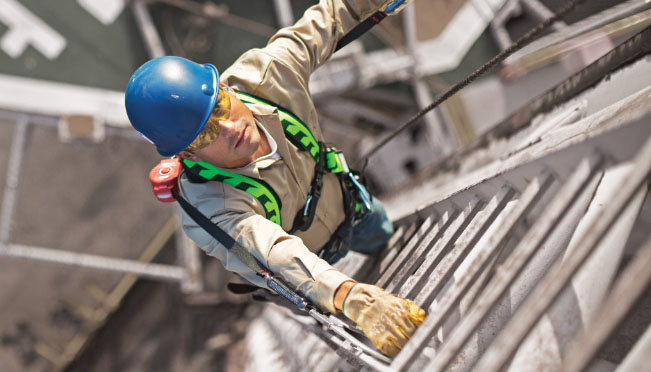
|
| |
Did you
know that there were 836 fatal falls from ladders in the United States from
2011-2016? Here’s what you need to know to stay compliant with ladder safety.
The OSHA
fixed ladder regulation (1910.23) was designed, at least partly, to align more
with the General Industry and Construction Standards. The regulation requires a
personal fall arrest or ladder safety system on fixed ladders over 24 feet. It
also eliminates and phases out the use of cages/wells and guardrails as primary
fall protection methods, allowing employers to choose the fall protection
system they want to use on existing and new ladders.
Following
is a ladder safety checklist to help you stay compliant:
- COUNT
THE RUNGS AND CHECK THE TOTAL HEIGHT
- To
quickly gauge a ladder’s height, count the number of rungs. If there are 24
rungs or more, this means it’s at least 24 feet and the standard applies
- Consider
the height of the ladder AND the height of the system you’re attaching for
safety; regulation states any ladder over 24 feet is applicable
- IS YOUR
LADDER FIXED OR NON-FIXED?
- Fixed
ladders require fall protection over a certain height
- For
non-fixed ladders, no fall protection is required but there must be three
points of contact at all times (two feet and one hand, for example)
- IS THERE
A METAL CAGE SURROUNDING YOUR LADDER?
- Depending
on type of fall protection system used it may be necessary to remove the
existing cage to ensure the cage does not interfere with safe operation of fall
protection system, OSHA Regulation 1910.28(b)(9)(iv)
- ARE YOU
REPAIRING OR REPLACING A RUNG? DOING MAINTENANCE ON THE CURRENT LADDER?
- Requires
if any modification to an existing ladder system is completed (i.e.
repairing/replacing a damaged rung), the entire ladder system must be updated
to adhere to the OSHA 1910.23 regulation
- NEW
LADDER SYSTEMS BEING INSTALLED MUST MEET THE REGULATION
- YOU NEED
GUARDRAILS OR FALL PROTECTION AT THE TOP OF EACH LADDER SYSTEM
- Depending
upon the distance workers travel away from the ladder system, it will determine
whether separate anchor points and fall protection is needed
Saf-T-Gard
carries a wide range of Honeywell fall protection products including harnesses,
lanyards, self-retracting lifelines, anchorage points, and fall protection
accessories. Click here to
shop them online, or call customer service at 1-800-548-GARD (4273) today
for more information or to place an order.
|
| |
|
| |
Vendor Product Spotlight: Cordova Safety Machinist® HPPG™ High Performance Glove Series |
| |
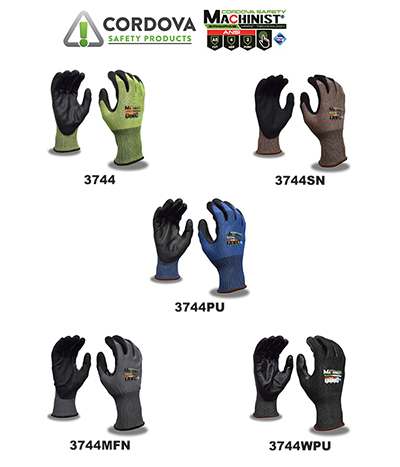
|
| |
Cordova Safety Machinist® HPPG™ High Performance Gloves provide precision performance by addressing the need
for strength and durability for a variety of applications. HPPG™ is
made from HPPE fiber embedded with graphene particles. Graphene is a nano-sized
carbon-based material that is 200 times stronger than steel by weight. HPPG™
fiber is 9 x stronger than HPPE on an equal weight basis and offers unbeatable
cut resistance and dexterity without combining steel or glass fibers. HPPG™
is cool and comfortable and 25% lighter than other gloves that offer the same
cut level and features no significant impact on cut-resistant ability under 8
hours heat, 8 hours room temperature, and 8 hours cold.
Additional features and benefits
include the following:
- 15-gauge
HPPG™ shells are made without a steel or glass fiber core and deliver
superior ANSI Level A5 cut resistance
- Touchscreen
compatible
- Sanitized®
anti-microbial treatment incorporated into the coating of each glove kills
bacteria inside the glove minimizing orders
- Five
styles with a variety of coatings including foam nitrile (3744), sandy
nitrile (3744SN),
polyurethane (3744PU),
micro-foam nitrile (3744MFN) and
eco-polyurethane (3744WPU) to offer abrasion, dexterity, oil grip and liquid penetration
- Made with FDA-approved materials for
food contact applications per code of federal regulations 21 CFR Parts 170-199
- Available in sizes Small-2XL
- Sold by the pair
Click here
to shop the Cordova
Safety Machinist® HPPG™ High Performance Gloves online
or call customer service at 1-800-548-GARD (4273) today for more
information or to place an order.
|
| |
|
| |

|
Watch the FREE First Aid Only First Aid for Fleet Vehicles and Remote Workplaces Webinar ON DEMAND |
| |

|
| |
- Be First
Aid Prepared - Did you know that every seven seconds a worker is injured on
the job?
- Be First
Aid Compliant - OSHA Guideline 29 CFR 1910.151 states that in the absence of a
hospital or clinic near the workplace that adequate first aid supplies must be
readily available.
- Be First
Aid Ready - Quick response to an injury can reduce lost time from work.
Having first aid nearby and on-the-go options may save a life.
Work is
not always at the home office or facility. First aid and emergency response
solutions are needed where the work is being completed. This webinar will discuss the challenges and solutions for your workers that operate fleet vehicles or those
performing work in remote locations and will also briefly cover some ANSI 2021
updates!
Join
Josh Holmes of First Aid Only to get a better understanding of how best to
respond to emergency situations in remote workplaces. Click here to
register and watch the FREE webinar ON DEMAND today.
|
|
|
|
|

|
|
| Key Information for Hurricane Workers |
|
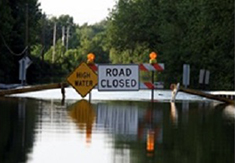
|
|
|
During
emergencies the use of key messages aiming to provide guidance in the
protection of the health and safety of emergency response and recovery workers
is a priority. The National Institute for Occupational Safety and health
(NIOSH) has created a document communicating key messages associated to the
multiple hazards related to storms, floods and hurricanes. The document is
available for employers, emergency response and recovery workers, and
volunteers. Click here to
access the key messages document.
|
|
| |
|
Shop @ Saftgard.com - The Smart, Simple and Speedy Way to Shop for Safety Online Today!
|
|

|
|
|
Saftgard.com makes it easier than ever for visitors to find exactly what they are looking for by utilizing a guided navigation layout with a fully-optimized “smart” search engine. The responsive design enables use and access to more than 6,000 products with enhanced product content and imagery on your PC, smart phone or tablet.
Moreover, existing Saf-T-Gard customers can link their account to a new Saftgard.com web login to review ALL past orders and invoices, create a “wish list” of favorite items, save carts to simplify the ordering/reordering process and so much more! Buyers without an existing Saf-T-Gard account can register for one online, or they can still search, browse and order on Saftgard.com without a Saf-T-Gard account.
We invite you to spend a few minutes at Saftgard.com, and if you haven't already, please register for an account to enable online ordering.
Click here for a shortcut to the registration page, and click here for detailed instructions on how to link your Saf-T-Gard account to a Saftgard.com web login.
|
|
| |
|
Visit with Saf-T-Gard
|
|

|
|
|
Hazards exist in every workplace. Common examples include slips, trips, falls, exposure to loud noises, working from heights, vibrations and unguarded machinery. The best way to protect your employees is to recognize the hazards that exist on the job, and control them by utilizing the appropriate personal protective equipment (PPE) for the application.
This is where Saf-T-Gard can help! We've been bringing workers home safely since 1936 with our finest industrial safety products and PPE, and we can do the same for you. Stop by our booth at any of the following trade shows to check out our comprehensive selection of safety products and services that directly address every workplace safety hazard.
NECA Safety Leadership Summit – Monday, November 14, 2022, from 4:30 p.m. to 7:00
p.m. and Tuesday, November 15, 2022, from 4:45 p.m. to 7:00 p.m., Seelbach
Hilton Hotel, Louisville, Kentucky, Booth #42
|
|
| |
|
Five Safety Tips
|
|
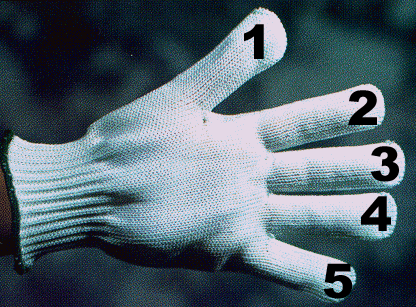
|
|
|
1. CUT IT
OUT - According to a 2017 Bureau of Labor Statistics report, 44% of workplace hand injuries fall into the cuts, lacerations and punctures category, accounting for more than 60,000 injuries in 2017 alone.
2. CUT IT
OUT - ANSI/ISEA 105 (USA) and EN388 (Europe) have test methods and
ratings to measure the cut resistance of industrial hand protection.
3. CUT IT
OUT - Kevlar®, Spectra® and Dyneema®
are excellent cut-resistant man-made fibers that can be used to manufacture
gloves.
4. CUT IT
OUT - The cut-resistant properties of Kevlar®, Spectra® and Dyneema®
gloves can be reinforced with coatings such as rubber, nitrile, and
polyurethane.
5. CUT IT
OUT - The ultimate cut-resistant gloves are made from metal mesh
(like chain mail).
|
|
| |
|
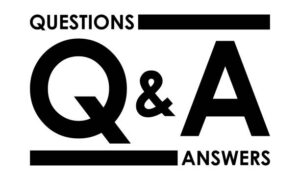
|
|
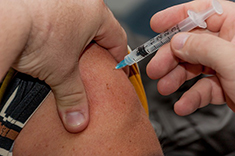
|
|
|
Question - Can an employer
require employees to get flu shots?
Answer - OSHA does
expect facilities providing healthcare services to perform a risk assessment of
their workplace and encourages healthcare employers to offer seasonal flu
vaccines. It is important to note that employees need to be properly informed
of the benefits of the vaccinations. However, although OSHA does not
specifically require employees to take the vaccines, an employer may do so. In
that case, an employee who refuses vaccination because of a reasonable belief
that he or she has a medical condition that creates a real danger of serious
illness or death (such as serious reaction to the vaccine) may be protected
under Section 11(c) of the Occupational Safety and Health Act of 1970
pertaining to whistle blower rights.
|
|
| |
|
| Saf-T-Gard Spotlight |
|

|
|
|
Bob Osborne is an IT Manager and joined Saf-T-Gard 3 years ago as an ERP Administrator.
What Bob likes
about Saf-T-Gard:
“The
family atmosphere is second to none. I enjoy learning about new ways to get
products out the door to customers as well.”
What makes Bob's
day:
“Being flexible enough to accomplish something that I didn't know about in advance.”
Bob's outside
interests are:
“Spending
time with my family, coaching fast pitch softball.”
Anything else:
“Be
safe!! Have fun!!”
|
|
| |
|
 Factoid Factoid |
|

|
|
|
Fall protection requirements for workers on guardrail-equipped
platforms
"Employees are working on a guardrail-equipped scissor lift
platform that extends beyond the wheelbase of the lift. The scissor-lift meets
all the applicable requirements in Part 1926 Subpart L. The workers are on the
scissor lift only when the scissor-lift is stationary. In this scenario, are
such workers required to be tied-off?"
When working from an
elevated scissor lift (ANSI A92.6 series), a worker need only be protected from
falling by a properly designed and maintained guardrail system. However, if the
guardrail system is less than adequate, or the worker leaves the safety of the
work platform, an additional fall protection device would be required.
|
|
| |
|
| As I See It |
|

|
|
|
It is
October 2022, and it is time to look beyond the marketing hype around PPE and
get real! I remember decades ago when I was studying marketing and the
instructor tried to clarify the difference between “puffery” and fact-based
product attributes.
For example, puffery is claiming that product A is the
“world’s finest hi-visibility vest (or whatever)”. What makes this puffery is
that the seller or writer or marketing staffer has never independently tested
or objectively evaluated ALL of the hi-visibility vests in the world to
substantiate that claim. But it probably got someone’s attention. And in a
trade magazine that I received today, a distributor of industrial eye
protection claimed to have “the best anti-fog protection in the world.” How do
they know?
Another
common marketing hype is in hand protection. Manufacturers and suppliers have
been chasing each other to offer the highest-rated cut-resistant glove. But cut
resistance is only one attribute, and it may not even be the most important for
the job at hand.
Years ago, I described the perfect glove as made from
acrylo-nitrile-poly-chlori-fluoro-aramid-butadiene-vinyl-alcpohol-chloride-urethane-ferro-nickel-ethylene-chrome-tanned-HDPE-HPPE-class
4-type II, low-modulus, level 9, impact-resistant TPE! It is the perfect glove,
but nobody will wear it and nobody can make it.
A much
better evaluation process is to engage with a qualified but objective safety
specialist to first analyze the job hazard and then explore data-driven
attributes of products for consideration. Not every manufacturer has a solution
for every application. And that is a major deficiency of both manufacturers
with narrow-focus blinders on and big box retailers and computer-driven online
websites, including those with “artificial intelligence (AI)”. You need to ask
what intelligent humanoid actually programmed the artificial intelligence.
For
real intelligence, and expertise, and experience, give Saf-T-Gard a call. We’re
here for you, because we are Saf-T-Gard International - Bringing Workers Home Safely Since 1936.
Sincerely,
Richard A. Rivkin, Saf-T-Gard CEO and Chairman of the Board
|
|
|
